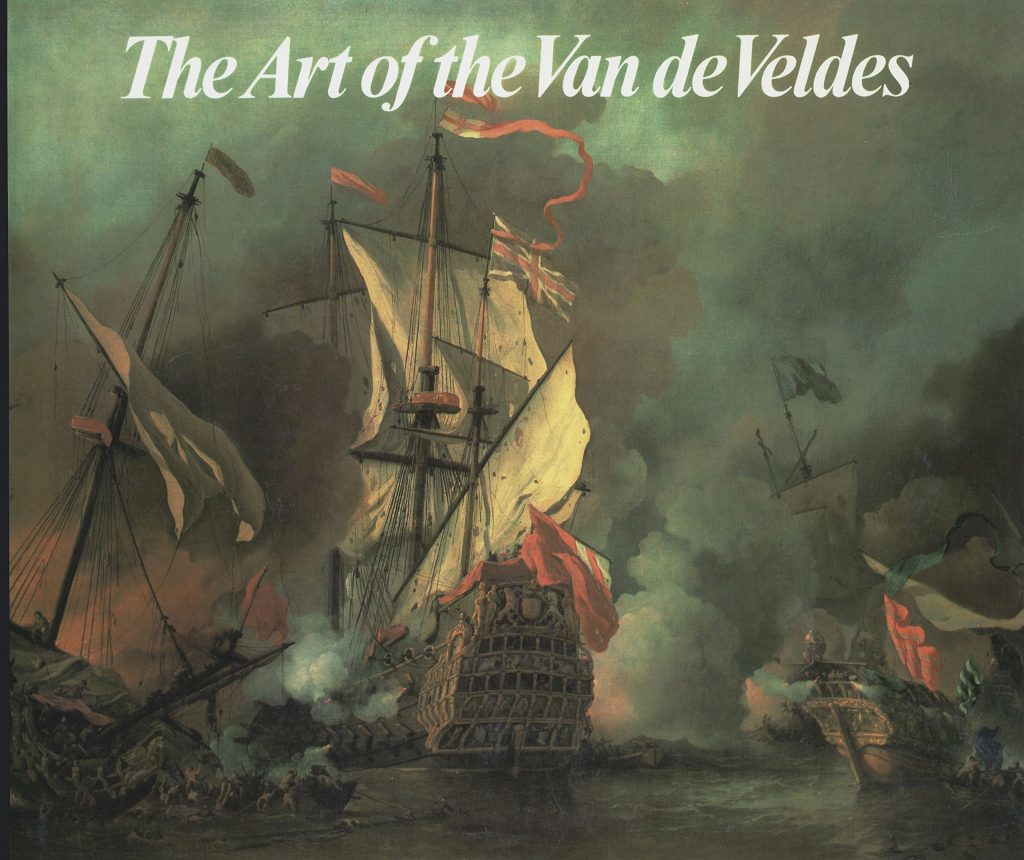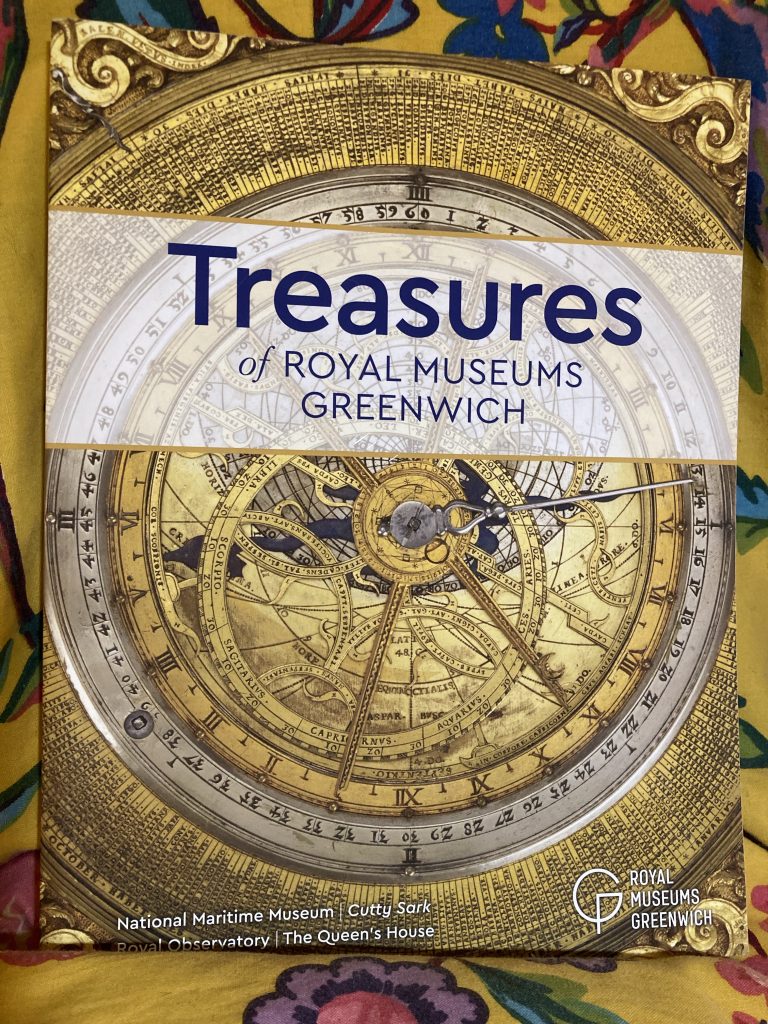

Teresa and I visited the Royal Museums, Greenwich, on Friday, 21st April. That was billed as the secondary attraction, with the main event being Salute’s 50th, on the Saturday. But we actually far preferred the museum visits in the end!
I’m pretty much totally broke right now. To go away at all was pushing the boat out. Buying this book, even though it was only £10 (orig. RRP £20), felt extremely extravagant. But I’m sure glad I did. It was a bargain, frankly.
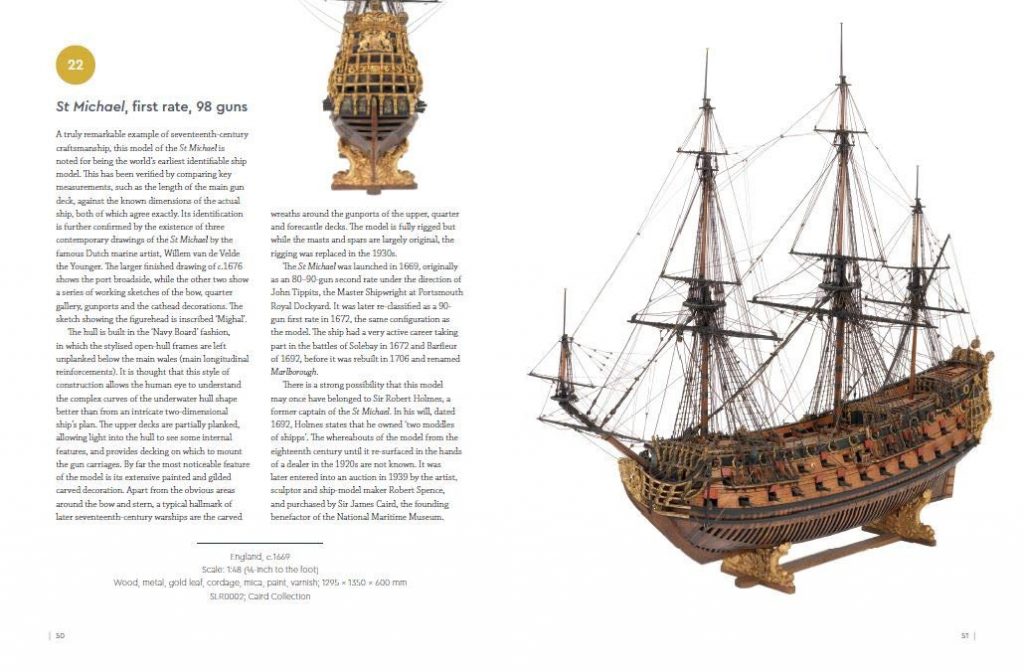
The contents really are, very literally, an embarrassment of riches. I’m currently reading it entry by entry, and I’m only one-tenth of the way in at the time of posting this. The objects are from the RMG’s collections across the National Maritime Museum, Cutty Sark, Royal Observatory and The Queen’s House.
We didn’t visit either the Cutty Sark or the Observatory, on this occasion. The Queen’s House had a temporary exhibition; paintings and drawings by the Van de Veldes. That was a fantastic exhibition in a fabulous setting.
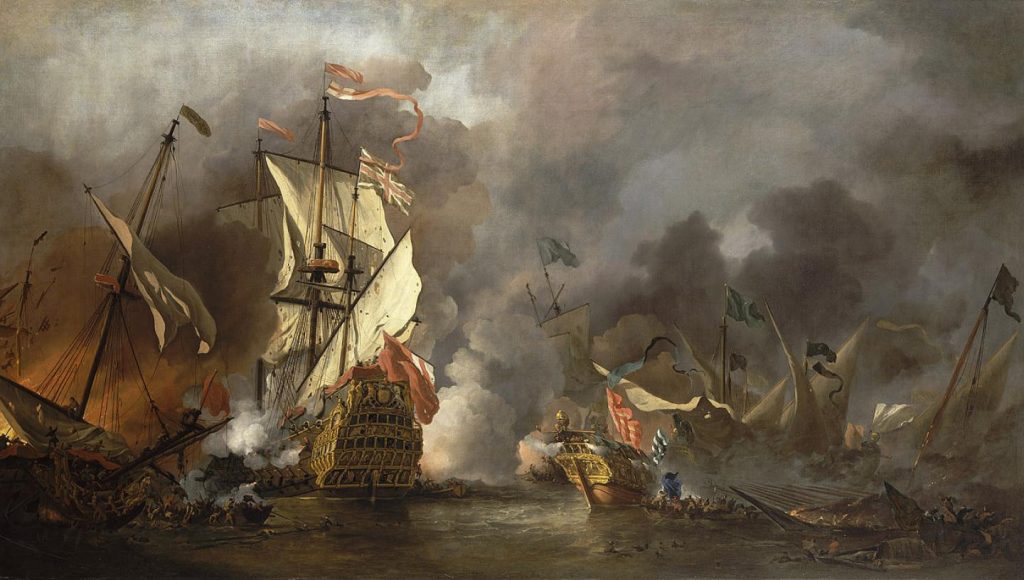
* Couldn’t find the title, or even which Van de Velde this is!? Prob’ the Younger…
The bulk of what’s in this book is to be seen at the National Maritime Museum, and, as the introductory stuff makes clear, a lot of that – such as the astronomical table clock pictured on the cover – comes from the famous (and enormous) Caird collection.
I had originally wanted to focus any such visit on ship models. And there are lots of unbelievable ship models in the collections. But the truth is that almost everything in these collections is really interesting. And the range, from instruments to baubles, paintings to ship models, books to weapons, clothing to globes… well, it’s astonishingly rich.
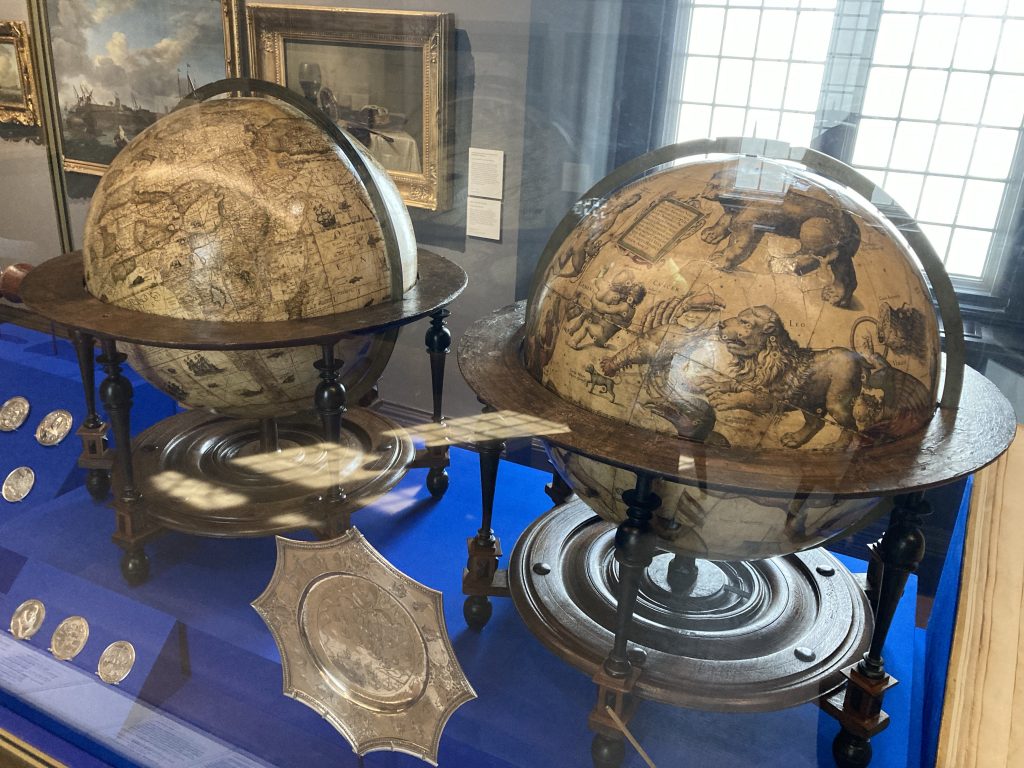
Some of the most ostensibly mundane things, a pair of breeches and stockings, for example, are revealed to be those worn by Nelson at Trafalgar. His blood still visible in them. Whilst Horatio’s iconic status almost inevitably turns such run of the mill ephemera into totemic relics, the depth of historical interest such things can convey is gradually extending to the ordinary ‘Jack tar’, and even the ladies he loved and left behind.
I think we have Neil McGregor, The British Museum and BBC Radio 4 to thank for the whole slew of The History of [whatever] in 100 Objects type books and shows that have followed in the wake of that epochal exhibition and series of radio and podcasts.
Whilst this book doesn’t title itself in that vein, there are in fact 100 ‘objects’, and it acknowledges that antecedent. And it keeps up that very richly informative and inspiring tradition, with its good old-fashioned Reithian aspirations to educate and inspire. Terrific!
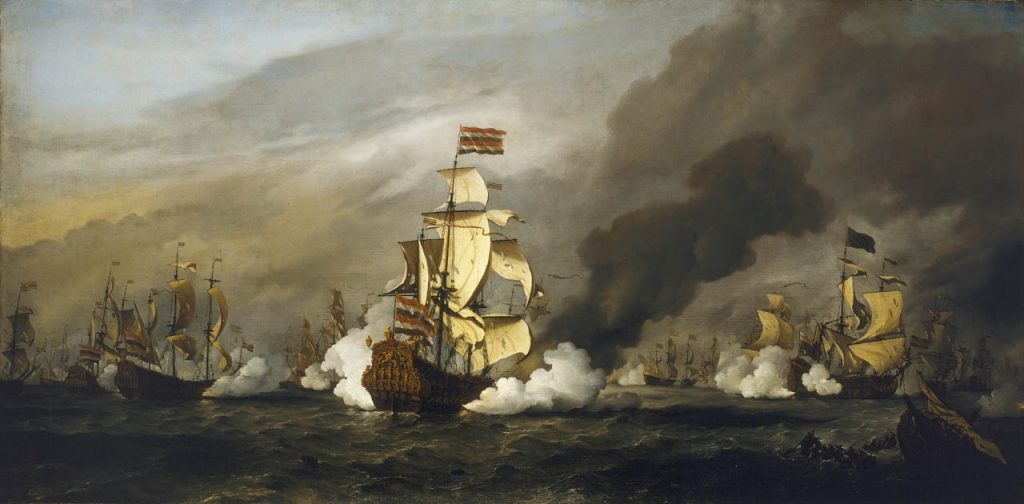
I could rave about this entry by entry. And I find it very salutory that things I might’ve initially cocked a snook at, for example the Royalist propaganda of Elizabeth I, The Armada Portrait, can be rendered fascinating by their broader context. My anti-Royalist desire to gloss over what I regard as a very ugly bit of nationalist chest-thumping is made more interesting when I read about how the ‘calm’ and ‘storm’ naval scenes can be regarded as ‘key moments in the development of European Maritime painting… particularly the focus on and eventual dominance of battle painting from 1600 onwards.’
I’m so keen on the latter genre (perusing the terrific Turner & The Sea helped galvanise an already incipient interest!), I’ll be looking for a cheap copy of the same museum’s book on the Van de Veldes:
